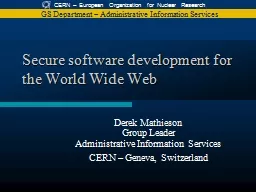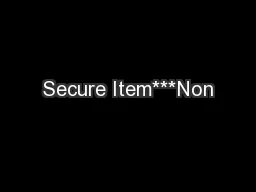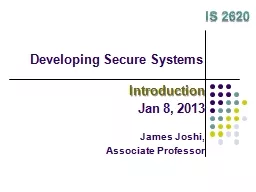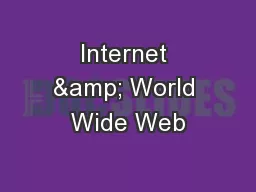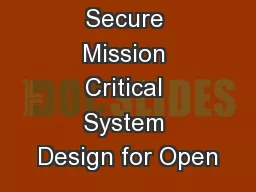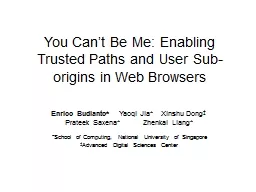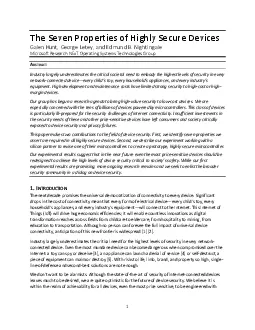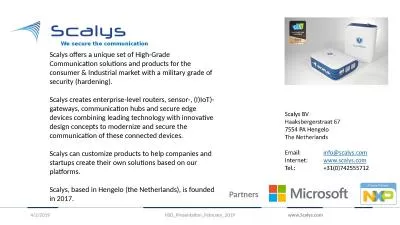PPT-Secure software development for the World Wide Web
Author : ellena-manuel | Published Date : 2018-12-22
Derek Mathieson Group Leader Administrative Information Services CERN Geneva Switzerland Who Am I Agenda Background Information Impact of Security Flaws Definitions
Presentation Embed Code
Download Presentation
Download Presentation The PPT/PDF document "Secure software development for the Worl..." is the property of its rightful owner. Permission is granted to download and print the materials on this website for personal, non-commercial use only, and to display it on your personal computer provided you do not modify the materials and that you retain all copyright notices contained in the materials. By downloading content from our website, you accept the terms of this agreement.
Secure software development for the World Wide Web: Transcript
Download Rules Of Document
"Secure software development for the World Wide Web"The content belongs to its owner. You may download and print it for personal use, without modification, and keep all copyright notices. By downloading, you agree to these terms.
Related Documents

